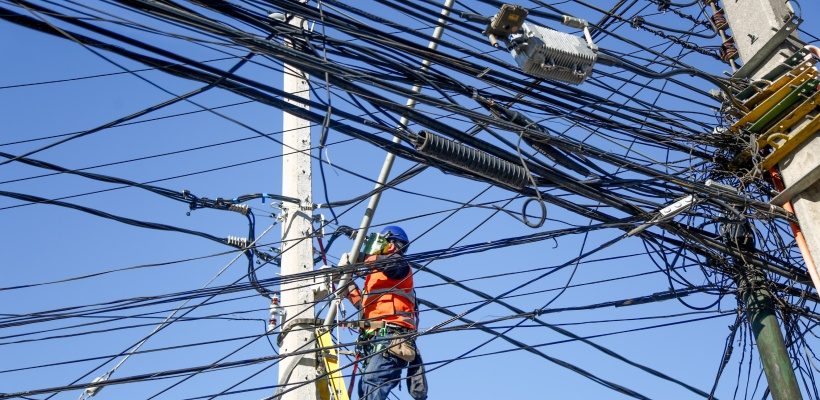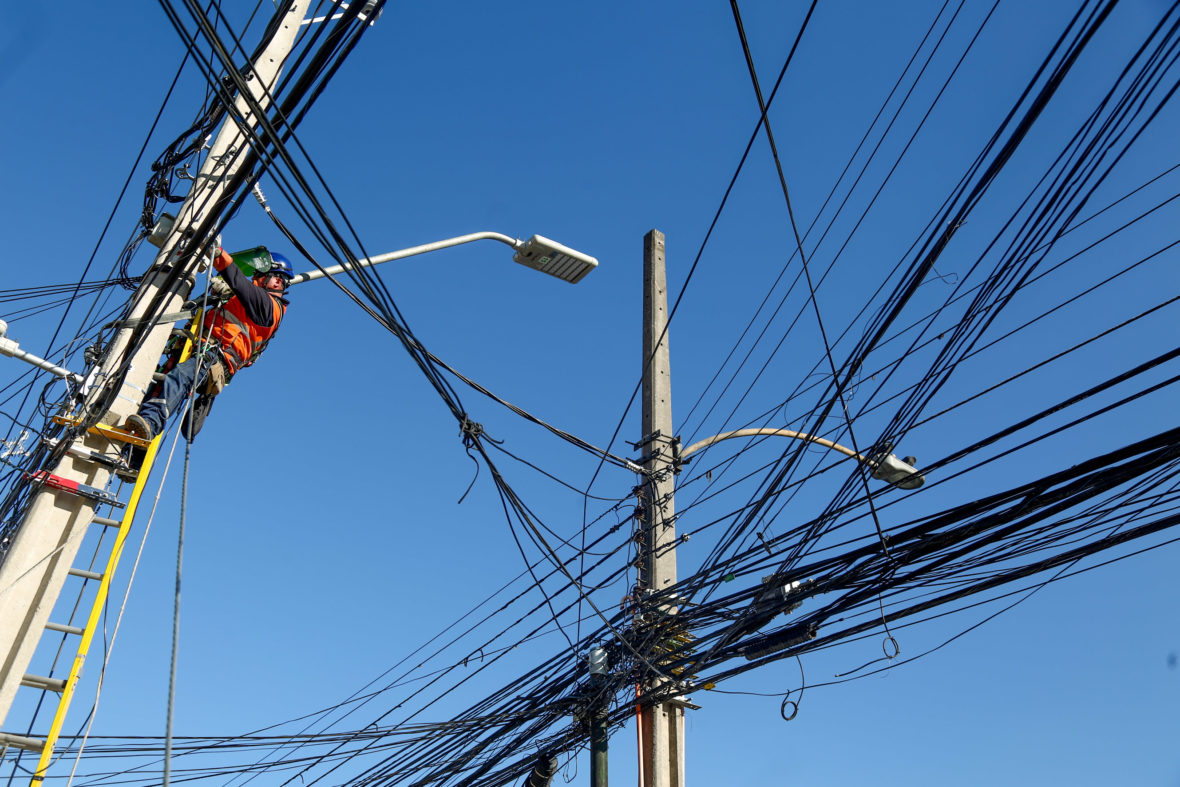
In Santiago, 20% of the low voltage network is subway, while in countries such as the Netherlands this figure reaches 100%. In urban areas, building overhead networks costs about US$ 370 thousand per km. Subway, US$ 3.5 million.
How much would it cost and how feasible is it to underground the power grid?
From time to time, the idea of undergrounding the basic services networks -mainly electricity- appears as a solution to various problems of consumers in the country’s large cities, such as, for example, that weather events, such as the snowfall over the weekend in Santiago -at the close of this edition there were still 4,900 homes without electricity service- generate massive outages in the supply.
However, the multiple benefits of this proposal clash with the high cost of its implementation and feasibility. Although there are no updated calculations on this issue -the most recent ones date from about five years ago, in the framework of a parliamentary discussion of a bill presented by Senator Juan Pablo Letelier-, in the electricity industry they estimate a range of between seven and 10 times more than the cost of erecting overhead lines. This would be considered an investment and, therefore, incorporated in the tariff, which would have a direct impact on customers’ bills.
Within the framework of this debate, it was also established that the cost of burying all the power lines in the country’s cities with more than 50,000 inhabitants would cost at least US$ 30 billion.
According to data from the international consulting firm Edison Electric Institute, the minimum cost of building new overhead electrical infrastructure is around US$ 377,000 per kilometer, while if it were to be built subway, the cost would be US$ 3.5 million. In Santiago, in Enel Distribución’s concession, the level of undergrounding of the low-voltage network barely reaches 20%, a far cry from countries such as the Netherlands (100%), Belgium (85%) and the United Kingdom (81%). However, these numbers are not so far from Portugal, which has buried 16% of its networks, or Austria, which has 15%.
According to Rosa Serrano, director of Studies and Regulation of Empresas Eléctricas (the association that brings together electricity distributors and transmitters), there are no recent studies on the feasibility and cost of undergrounding the network adapted to the Chilean reality, but the estimates handled by the association give similar figures. However, the reality varies depending on the density of the area in which undergrounding is sought, due to economies of scale.
In 2008, a bill was introduced to bury the cables in most of Chile. The cost? US$ 30 billion.
“The cost of undergrounding depends directly on the characteristics of the areas to be intervened. A cost analysis should be made from a public policy analysis, considering that the benefits are multiple. In any case, there are other alternatives, such as undergrounding the medium and low voltage networks”, the expert points out.
System security
Serrano adds that the quality of service should be at the heart of the discussion, as this is the background of the debate. In his opinion, undergrounding the grids would be a step forward, but it should be complemented with other technologies, such as smart grids. Regarding how this investment would be paid for, he indicates that this is something to be analyzed, because it is not viable for the companies to absorb this cost all at once.
Hugh Rudnick, an academic at the Catholic University and director of Systep, adds that it is a “viable solution, but with high costs, which are not justified in an economy like ours”. In addition, he says that this is not necessarily the solution to the instability of the network, as this weekend some areas where the low voltage cables go through subway ducts suffered outages anyway.
Pablo Alvarez, manager of Housing and Urbanism of the Chilean Chamber of Construction (CChC), warns that there is no norm in Chile that regulates the burying of networks, so what has been done are rather isolated exercises, in areas such as Valdivia or Vitacura. However, he believes that a good alternative is for the municipalities themselves to lead efforts in this direction, as they also create benefits in terms of landscaping and added value.
The CChC has suggested that a good option would be to concession the subway pipelines, coordinating all the public services that would use them, such as electricity, telephone or television distributors.




